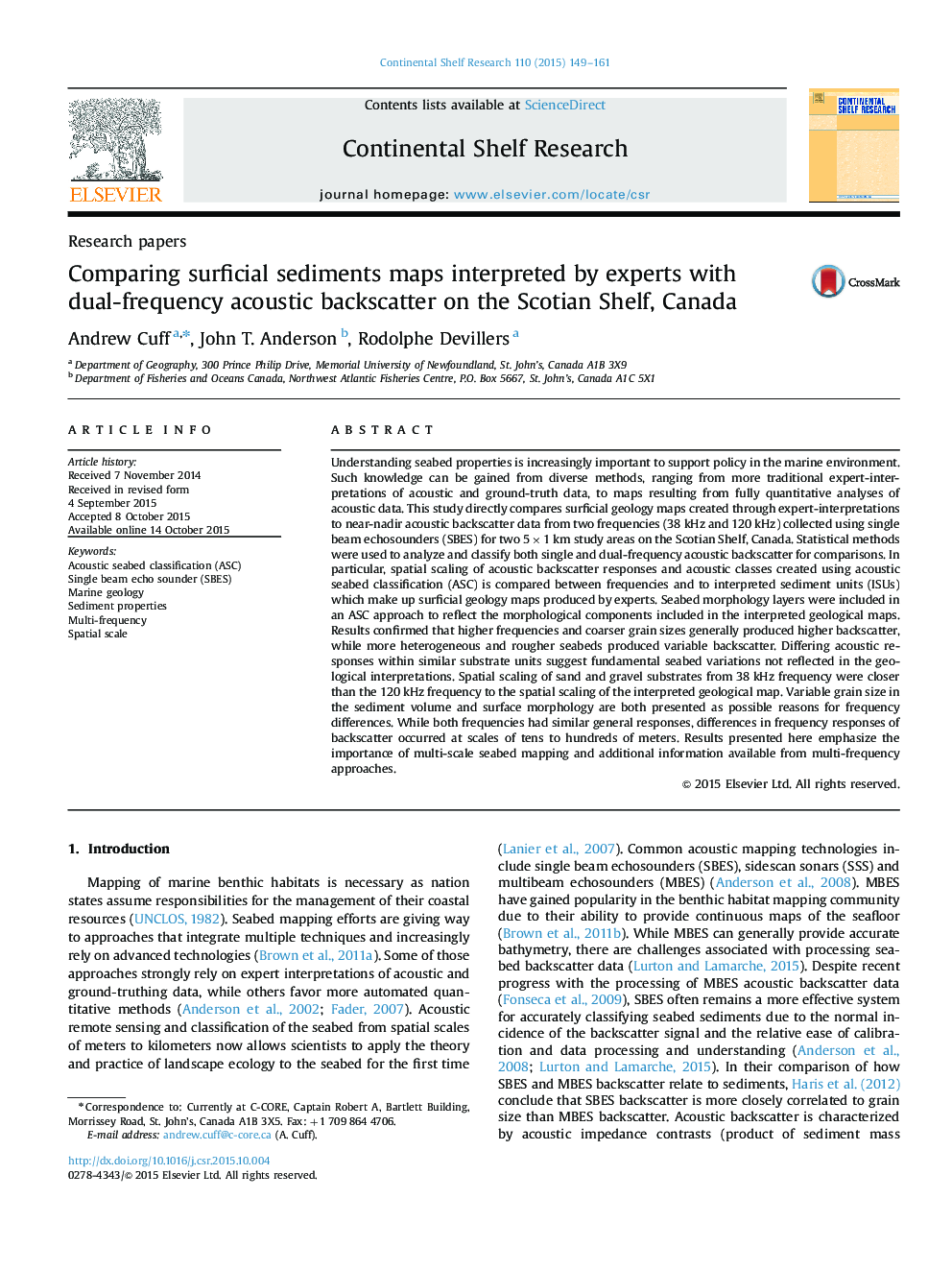| کد مقاله | کد نشریه | سال انتشار | مقاله انگلیسی | نسخه تمام متن |
|---|---|---|---|---|
| 6382985 | 1626102 | 2015 | 13 صفحه PDF | دانلود رایگان |
- Dual-frequency backscatter compared to expert-interpreted geological maps.
- Compared spatial relationship of geological maps and acoustic backscatter responses.
- Observed small-scale acoustic differences were not captured in geological maps.
- Lower frequency more accurately reflect spatial scaling of geological units.
- Surface morphology had a measurable effect on backscatter.
Understanding seabed properties is increasingly important to support policy in the marine environment. Such knowledge can be gained from diverse methods, ranging from more traditional expert-interpretations of acoustic and ground-truth data, to maps resulting from fully quantitative analyses of acoustic data. This study directly compares surficial geology maps created through expert-interpretations to near-nadir acoustic backscatter data from two frequencies (38Â kHz and 120Â kHz) collected using single beam echosounders (SBES) for two 5Ã1Â km study areas on the Scotian Shelf, Canada. Statistical methods were used to analyze and classify both single and dual-frequency acoustic backscatter for comparisons. In particular, spatial scaling of acoustic backscatter responses and acoustic classes created using acoustic seabed classification (ASC) is compared between frequencies and to interpreted sediment units (ISUs) which make up surficial geology maps produced by experts. Seabed morphology layers were included in an ASC approach to reflect the morphological components included in the interpreted geological maps. Results confirmed that higher frequencies and coarser grain sizes generally produced higher backscatter, while more heterogeneous and rougher seabeds produced variable backscatter. Differing acoustic responses within similar substrate units suggest fundamental seabed variations not reflected in the geological interpretations. Spatial scaling of sand and gravel substrates from 38Â kHz frequency were closer than the 120Â kHz frequency to the spatial scaling of the interpreted geological map. Variable grain size in the sediment volume and surface morphology are both presented as possible reasons for frequency differences. While both frequencies had similar general responses, differences in frequency responses of backscatter occurred at scales of tens to hundreds of meters. Results presented here emphasize the importance of multi-scale seabed mapping and additional information available from multi-frequency approaches.
Journal: Continental Shelf Research - Volume 110, 1 November 2015, Pages 149-161
